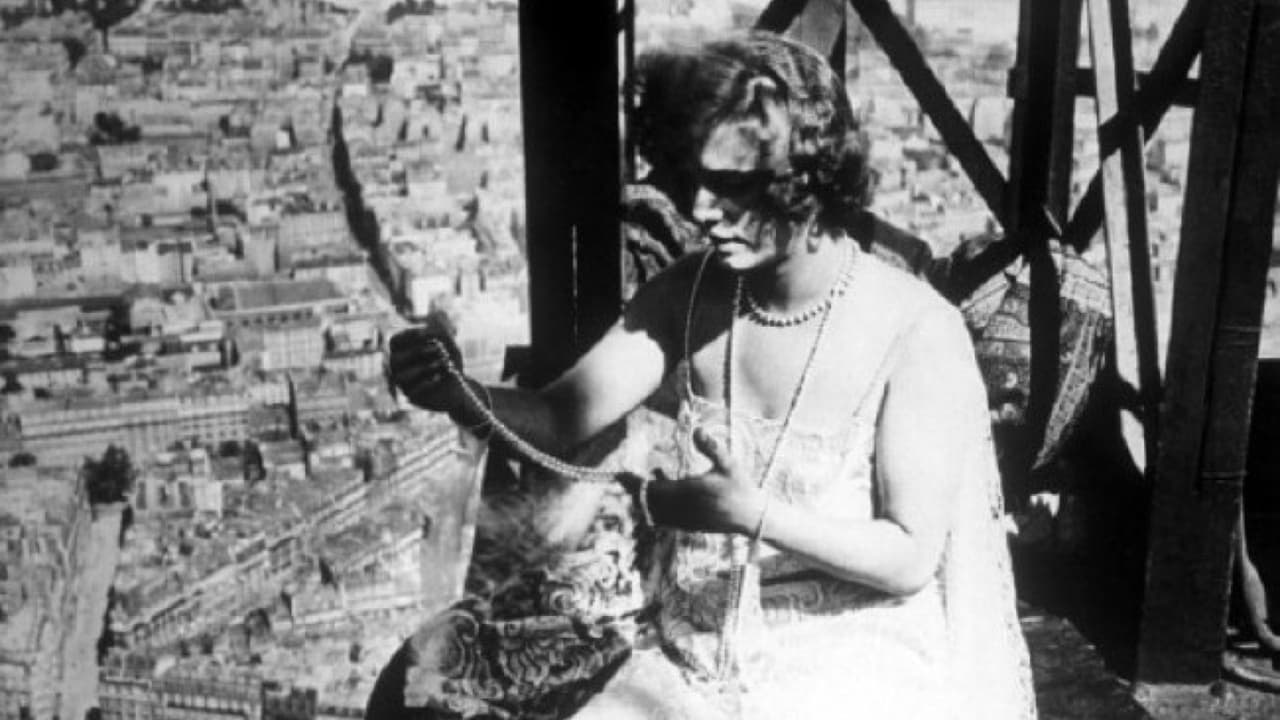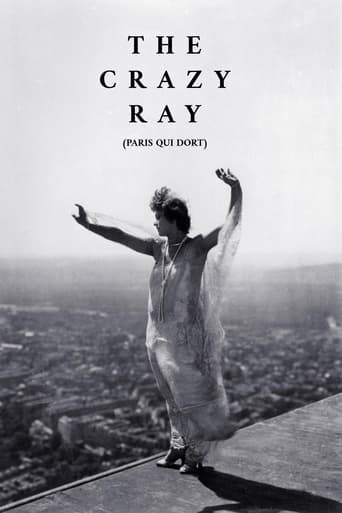Diagonaldi
Very well executed
Numerootno
A story that's too fascinating to pass by...
Robert Joyner
The plot isn't so bad, but the pace of storytelling is too slow which makes people bored. Certain moments are so obvious and unnecessary for the main plot. I would've fast-forwarded those moments if it was an online streaming. The ending looks like implying a sequel, not sure if this movie will get one
Griff Lees
Very good movie overall, highly recommended. Most of the negative reviews don't have any merit and are all pollitically based. Give this movie a chance at least, and it might give you a different perspective.
Horst in Translation (filmreviews@web.de)
"Paris qui dort" is a French science fiction drama movie from over 90 years ago. It is a very early career effort by René Clair, who is considered among France's most influential filmmakers of all time. It is of course black-and-white and also still a silent movie. I have to say I liked it early on when it really focused on the mad scientist putting (almost) the entire city of Paris into stasis. When the police officer walks around and sees all the people who are apparently stunned. Unfortunately the film later on loses itself in pointless conversations and people randomly playing cards instead of convincingly elaborating on that interesting plot idea. Also the ending did not really do too much for me. As a whole, I would not recommend it, although this 34-minute film certainly has a couple interesting moments.
Cinema_Fan
What a stunner this little movie is. With fantastic panoramic shots of early nineteen-twenties Paris. Called originally, Paris Qui Dort, plus too, At 3:25 or The Crazy Ray, this early science fiction story is set in, around and on the Eiffel Tower and the empty city Paris streets.A night watchman, waking up one morning, while sleeping on the top of the Eiffel Tower, finds the whole of Paris has fallen asleep, permanently, with only himself for company and roaming the empty streets in bewilderment. After a short while, he stumbles across a small group of other bemused survivors. They explore. They take advantage. They have fun.Parisian born René Clair's (1898 – 1981), whose other works include À nous la liberté Entr'acte (1924 short), Under the Roofs of Paris (1930) and À nous la liberté (1931), short comedy is a work of vision that today's contemporary cinema makers seem to have taken notice. With post isolationist films as 28 Days Later (2002), The Omega Man (1971) and Terry "Dalek creator" Nation's 1975 BBC television adaptation of "Survivors", this, Paris Qui Dort, is a very fascinating early contender of the sci-fi genre.Placed at the heart is a narrative of while the cats are away the mice shall play, with wonderful shots of a bygone city seen from far above and with moments of comedy, The Crazy Ray is a classic of immense importance to the genre of sci-fi magic. Seen as the very first science fiction fable Georges Méliès's 1902 Le voyage dans la lune (A Trip to the Moon) has set the trend for visionary art, with the silent era composing of some of the greatest artists: Chaplin, Keaton, Clair, Lang and Hitchcock. At 3:25 can be seen as a new and fresh beginning for said filmmaker René Clair and a bold step into the unknown, as sound was soon to take control and all but the greatest has superseded to dominate.Paris Qui Dort is a true gem, and while the mice are at play I highly recommend that you freeze time and find a moment to explore this intriguing visual work of art.
MartinHafer
This is a super-inventive silent film from the same director (René Clair) who later made the highly original "À nous la liberté!". Oddly, despite being a terrific film and me being a huge fan of silents, I have never heard about it. It certainly deserves to be better remembered.The film begins with a man coming home from his job at the top of the Eiffel Tower. He is amazed to see that everyone has stopped dead in their tracks and are immobile. For a while he thinks he's the only living and moving person, but soon an airplane lands with some others just like himself--mobile and alert. For days the small group cavorts, though after a while tempers flair--after all, they are hour guys and only one woman! Just before they can kill each other, they receive a wireless communication from another woman in Paris, so they run to her address. According to the new lady, her crazy father is an inventor and made a "crase ray" that has literally stopped everyone in their tracks. The guy in the tower and people in the airplane were not effected because the ray had a limited height. The new girl was unaffected because the scientist made the house crase ray-proof! While there is more to this story, I need to point out for a silent it was well written, acted and directed and has aged very well as a result. This fantasy/sci-fi film is so unique and charming, I encourage all lovers of the silents to look for it--you won't be sorry.
jldmp1
One has to love these early shorts -- look at the freedom that existed to film more or less whatever subject crossed the artist's mind. And at the self-reference: in the narrative, the characters have the freedom to do more or less whatever crosses their minds. The film itself is the work of a 'mad scientist' about the experiment of the mad scientist within.The construction is both simple and deeply abstract: we begin with a lone figure against the backdrop of Paris architecture, which grows increasingly populated by statuesque mimes, who are manipulated by animated mimes. The movie ends when the level of abstraction is removed. Clearly what have here is a work that is conceived from start to finish as a visual story...something so influential that has survived the test of time, in ways that so many other 'experiments' did not. Modern borrowings from this are found in 'Devil's Advocate', 'Dark City', 'Abre Los Ojos/Vanilla Sky'...

